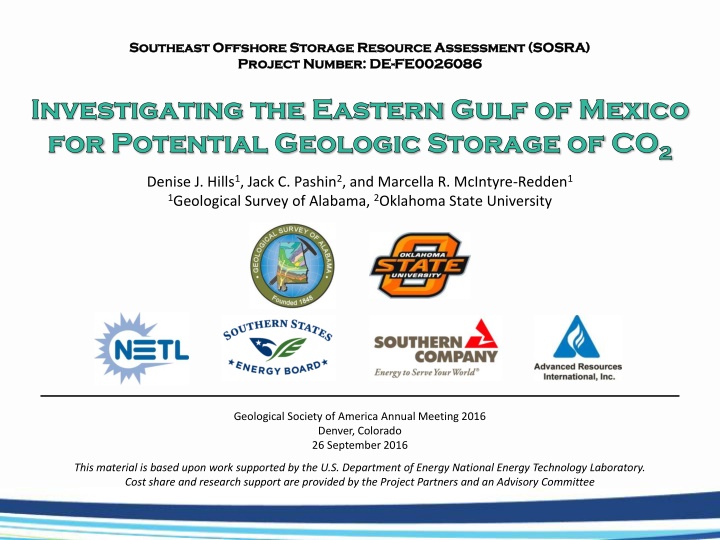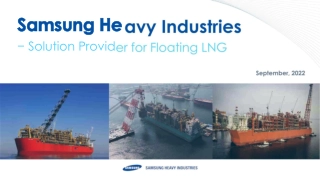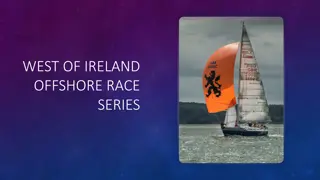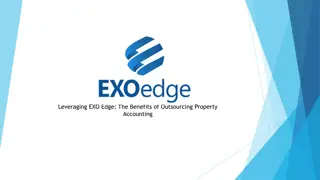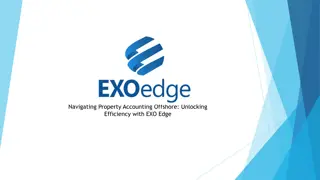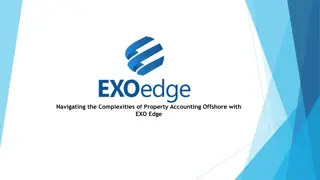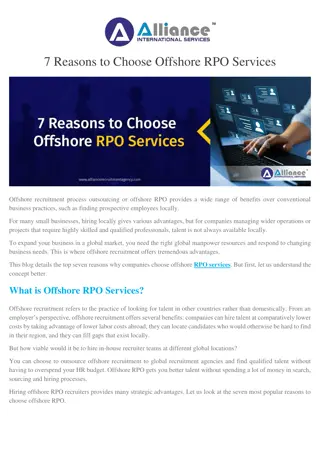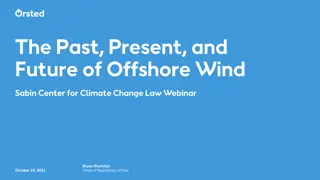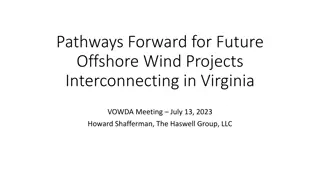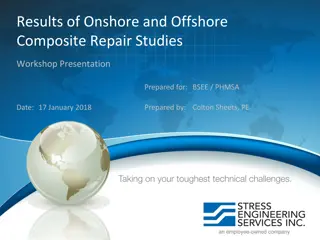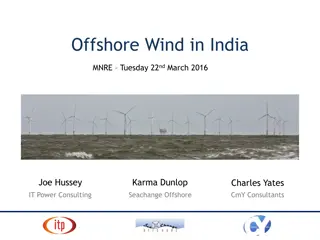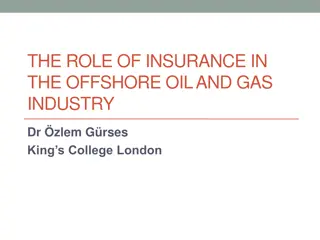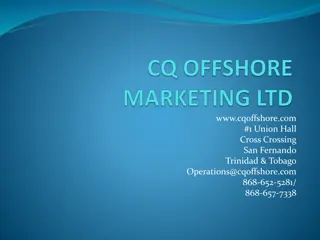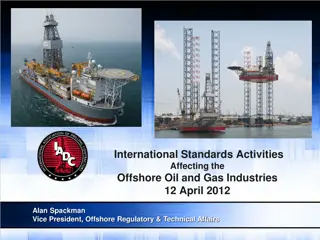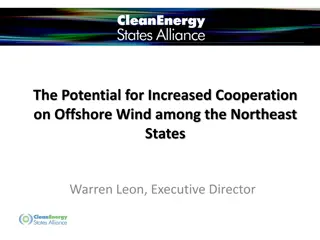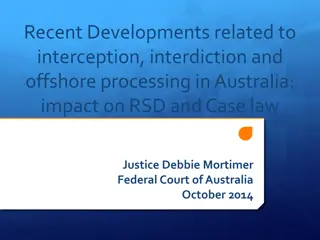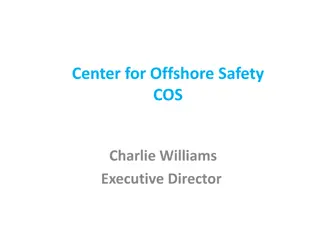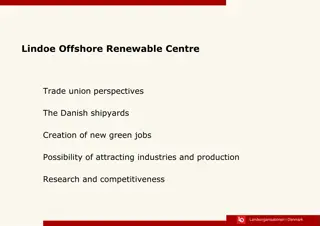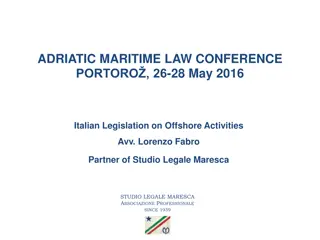Southeast Offshore Storage Resource Assessment
Investigating the potential geologic storage of CO2 in the Eastern Gulf of Mexico, this project explores offshore reservoirs for CCUS with considerations for geological strategies and proven storage methods like Sleipner in the North Sea. Discover the EGOM study area, emission sources, and the tale of two platforms in this comprehensive study.
Download Presentation

Please find below an Image/Link to download the presentation.
The content on the website is provided AS IS for your information and personal use only. It may not be sold, licensed, or shared on other websites without obtaining consent from the author.If you encounter any issues during the download, it is possible that the publisher has removed the file from their server.
You are allowed to download the files provided on this website for personal or commercial use, subject to the condition that they are used lawfully. All files are the property of their respective owners.
The content on the website is provided AS IS for your information and personal use only. It may not be sold, licensed, or shared on other websites without obtaining consent from the author.
E N D
Presentation Transcript
Southeast Offshore Storage Resource Assessment (SOSRA) Southeast Offshore Storage Resource Assessment (SOSRA) Project Number: DE Project Number: DE- -FE0026086 FE0026086 Investigating Investigating the for for Potential Geologic Storage Potential Geologic Storage of the Eastern Eastern Gulf of Mexico Gulf of Mexico of CO CO2 2 Denise J. Hills1, Jack C. Pashin2, and Marcella R. McIntyre-Redden1 1Geological Survey of Alabama, 2Oklahoma State University Geological Society of America Annual Meeting 2016 Denver, Colorado 26 September 2016 This material is based upon work supported by the U.S. Department of Energy National Energy Technology Laboratory. Cost share and research support are provided by the Project Partners and an Advisory Committee
Why Offshore Reservoirs for CCUS? Why Offshore Reservoirs for CCUS? Potentially giant CO2 capacity Abundant stacked saline formations and depleted oil and gas reservoirs Significant infrastructure in place Proven offshore sequestration technology Favorable ownership and access
Geological Considerations for CCUS Geological Considerations for CCUS
How Do We Adapt Proven Storage Strategies? How Do We Adapt Proven Storage Strategies?
Offshore CO Offshore CO2 2 Storage: Storage: Sleipner Sleipner, North Sea , North Sea ~1 Mt/yr stored in Utsira Fm. (Miocene- Pliocene) at ~1,000 m World s first commercial CO2 storage project Kaarstad (2004)
US CO US CO2 2 EMISSION EMISSION SOURCES and SOSRA Region SOURCES and SOSRA Region
EGOM Study Area and EGOM Study Area and Subregions Subregions DeSoto Canyon Salt Basin DCSB Middle Ground Arch MGA Tampa Embayment TE Sarasota Arch SA South Florida Basin SFB
A Tale of Two Platforms A Tale of Two Platforms Ultradeep gas platform Shallow gas well
Miocene Gas Sands Miocene Gas Sands Handford and Baria (2003)
Net Miocene Sand > 2500 Net Miocene Sand > 2500 ft ft Deep Deep Hills (2008)
Cretaceous Facies Cretaceous Facies NETL EOR TEST SOSRA REGION SECARB ANTHROPOGENIC TEST Pashin et al. (2014)
Cretaceous Sandstone Cretaceous Sandstone
DeSoto DeSoto Canyon Canyon Salt Basin Salt Basin - - Lithologic Lithologic Columns Columns Seal Sink Scale in feet
West Florida Shelf Bathymetry West Florida Shelf Bathymetry Broad, shallow, region near shore (NE of 80 m contour). Distally steepening outer shelf leading to West Florida Escarpment. Shallow Shelf Distally Steepened Shelf
Florida Florida Lithologic Lithologic Column Column Seal Sink Roberts-Ashby et al. (2015)
West Florida Shelf West Florida Shelf- -Escarpment Escarpment Basin Escarpment Shelf SL QT K K 3 km QT J J 6 km K J Basement 9 km J VE ~4x Roberts and Erickson (2009)
Observations and Further Questions Observations and Further Questions Large portfolio of potential sinks and seals in eastern Gulf of Mexico region. Complex structural chronology, stratigraphic architecture in DeSoto Canyon Salt Basin. Relatively simple Cretaceous carbonate platform and distally steepened Cenozoic shelf in West Florida. Geopressure >12,000 ft; main storage prospects in Cretaceous-Miocene section. Seismic and well data currently being compiled and analyzed to address questions: Is sufficient porosity, permeability available in carbonate units to support commercial offshore storage? Are robust reservoir seals developed above Miocene sand units?
